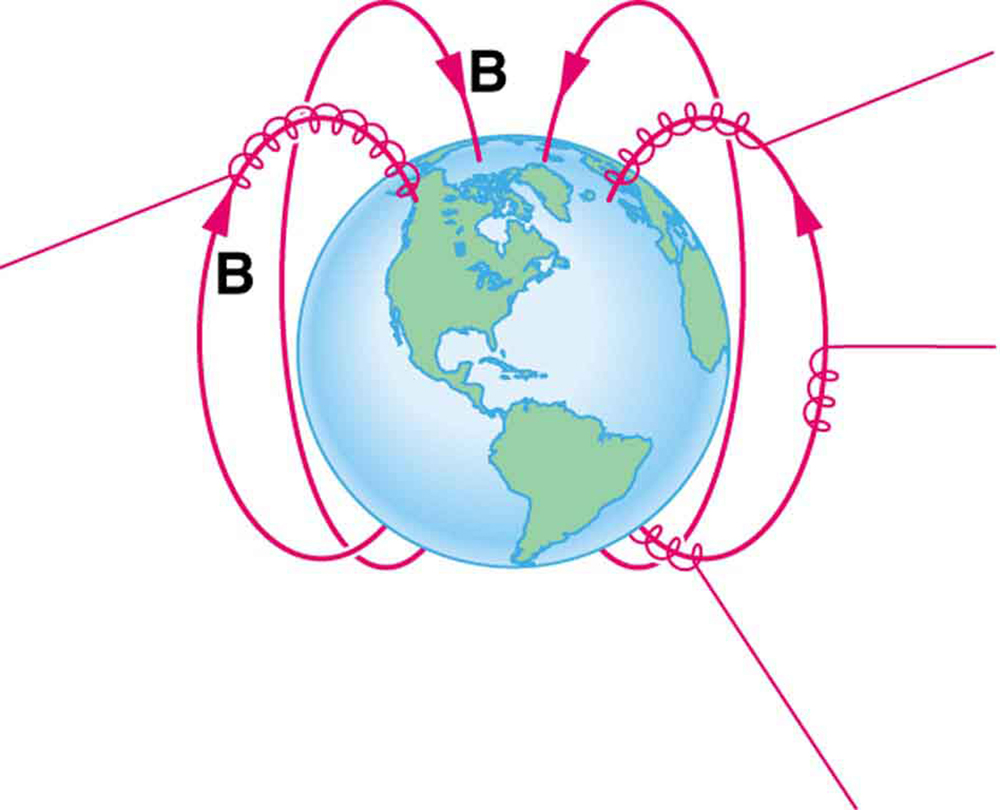Magnetism, an enigmatic facet of electromagnetism, plays a pivotal role in the universe, influencing everything from the behavior of subatomic particles to the vast dynamics of galaxies. But how exactly is the magnetic field produced at the atomic level? This profound question invites a deeper exploration of electron behavior, atomic structure, and fundamental physics.
At the atomic core lies the nucleus, a dense region composed of protons and neutrons. Surrounding this nucleus, electrons traverse defined orbits or energy levels, creating a distinct atomic architecture. What ultimately contributes to the formation of a magnetic field within these atomic structures? The answer lies predominantly in the intrinsic properties of electrons, particularly their spin and orbital motion.
To comprehend how magnetic fields arise, one must first grasp the concept of electron spin. Spin is a fundamental property of electrons, akin to how planets rotate. Intriguingly, despite being an intrinsic characteristic, it is essential to note that electron spin does not correspond to literal spinning in a classical sense. Instead, it relates to the electron’s intrinsic angular momentum, quantified in half-integer values—forming the basis of quantum mechanics. Each electron behaves as a tiny magnet due to its spin, with a magnetic moment that aligns along specific axes.
A common query arises: If electrons indeed possess a magnetic moment, how do they collectively generate a macroscopic magnetic field? The answer resides in the alignment of these electron spins. In materials such as iron, cobalt, and nickel, groups of atoms exhibit parallel spin alignment, generating a significant magnetic field. This coherence among spins forms what is known as ferromagnetism, where the effects of individual atomic magnets coalesce, leading to collective magnetism observable at the macroscopic level.
But what about the contribution from the orbital motion of electrons? As electrons navigate their atomic orbits, they generate a magnetic field due to their charge moving through space—akin to electric currents. When electrons occupy certain orbital configurations, they can contribute to an overall magnetic dipole moment for the atom. This phenomenon is especially salient in transition metals, where d-orbitals are partially filled, allowing for varied orbital magnetic moments to emerge. The interplay of spin and orbital magnetic moments explains why some materials exhibit complex magnetic properties, influenced by the arrangements and interactions of numerous electrons.
Furthermore, the phenomenon of orbital angular momentum significantly influences how magnetic fields behave in atoms. The overall geometry of the electron cloud resulting from these orbitals can yield diverse effects on the magnetic properties of materials. The concept of magnetic susceptibility, which describes how a material responds to an external magnetic field, becomes essential here. Paramagnetic materials, for instance, display weak magnetic attraction when subjected to an external field, primarily due to unpaired electrons in partially filled orbitals. In contrast, diamagnetic materials exhibit a weak repulsion and have paired electrons, which cancel out their magnetic moments.
In the realm of quantum mechanics, the effects of electron interactions further complicate the dynamic. Exchange interactions—a quantum mechanical phenomenon—arise when two electrons influence each other’s spin orientation through their wave functions. These interactions can lead to phenomena such as antiferromagnetism, where adjacent atoms display opposing magnetization, fundamentally altering the collective magnetic behavior at the atomic level.
One may ponder the significance of these microscopic interactions: How do atomic magnetic properties translate into larger-scale observations, such as compass behavior or the operation of electric motors? The answer embodies the principle of emergent properties. When countless atoms with aligned or opposing magnetic moments aggregate, their behaviors harmonize to produce macroscopic magnetic phenomena visible within our daily experiences. This transition from the quantum to the classical realm is both splendid and perplexing, showcasing the beauty of physics at the atomic level.
When delving further into magnetic material classification, one encounters the concepts of ferromagnetism, antiferromagnetism, and paramagnetism. Each of these properties stems from the fundamental atomic interactions and influences such as temperature. For example, thermal agitation can disrupt spin alignment in ferromagnetic materials, leading to a loss of macroscopic magnetism upon reaching the Curie temperature, a phenomenon that connects thermal energy to magnetic stability.
The behavior of magnetic fields at the atomic level inevitably leads to a broader inquiry: What ramifications do these magnetic properties hold for technology and scientific advancement? The advent of magnetic resonance imaging (MRI), data storage technologies, and advancements in quantum computing all hinge on the principles of atomic magnetism and electron dynamics. Exploring and harnessing these atomic-level properties may pave the way to breakthroughs in electronics, telecommunications, and medical technology.
In conclusion, the production of magnetic fields at the atomic level is a multifaceted phenomenon that encompasses electron spin, orbital motion, and intricate interactions. The interplay of these factors results in the diverse magnetic properties exhibited by various materials, ultimately influencing both the microscopic world of atoms and the macroscopic phenomena we observe in daily life. The journey to unraveling the mysteries of magnetism continues, driven by curiosity and the ceaseless quest for knowledge within the realms of physics and beyond.












